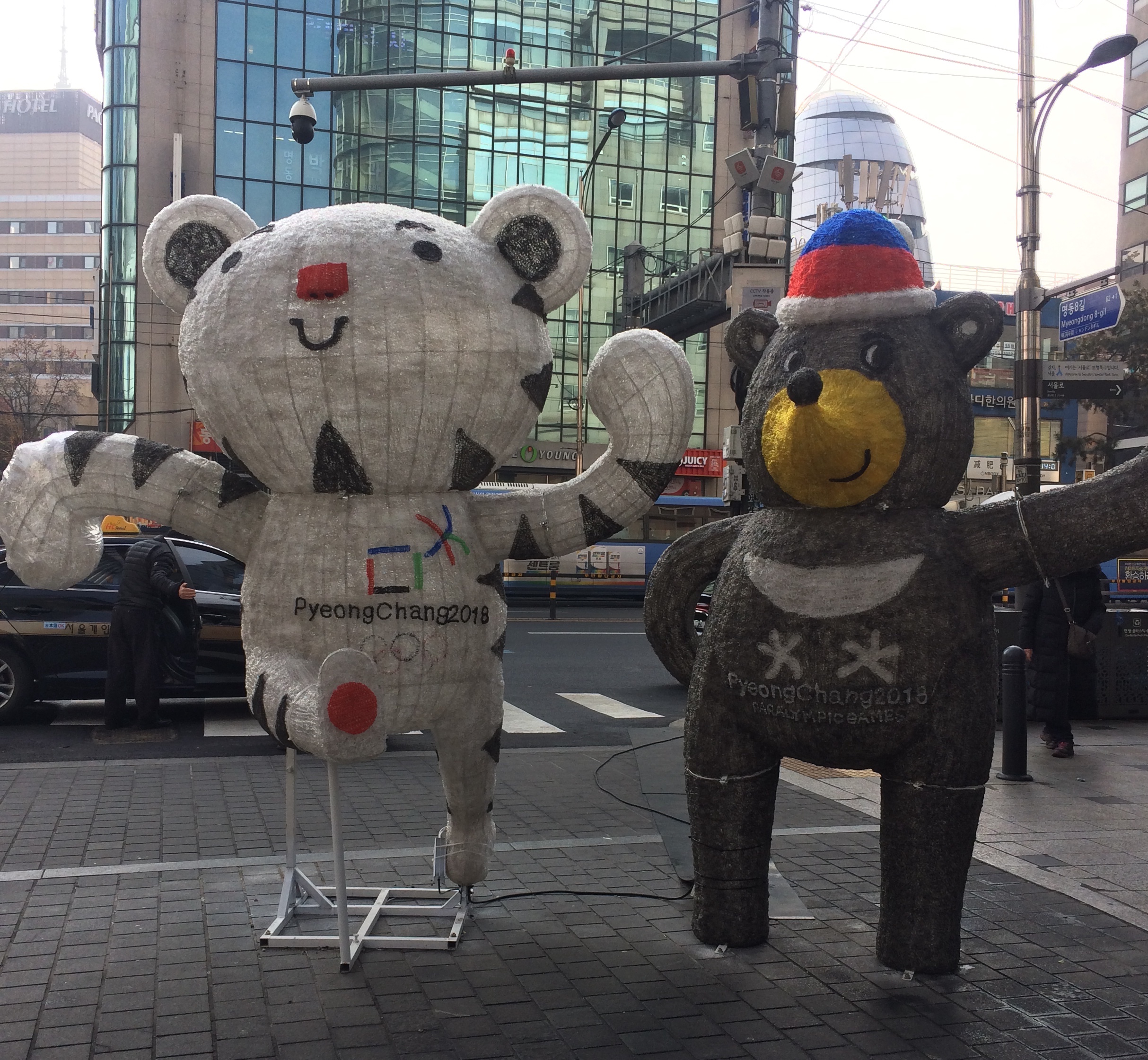Fans of Olympics history may remember or heard about the 1996 Summer Olympics controversy surrounding the official mascot “Izzy”, The official mascot was based on an amorphous creature “Whatizit” or “What is it?” and to this day remains the butt of many jokes and a blight on Olympic mascot history.
Thankfully Korea has returned to tradition with the culturally significant white tiger, Soohorang 수호랑 and the Asiatic black bear Bandabi 반다비 for the PyeongChang 2018 Winter Olympics and Paralympics Mascots.
In Korean tradition the white tiger is seen as a benevolent protector against evil. The name Sooharang comes from the Korean word sooho 수호 "protection" & ho-rang-i 호랑이 "tiger”. The protective white tiger will mascot the Olympics.
The Asiatic black bear is often referred to as the “Korean Moon Bear” for the crescent shaped white “moon” shape on its chest. Bandabi’s name comes from bandal 반달 ”half-moon" & bi 비 ”commemoration”. The Korean Moon Bear is particularly appropriate mascot for the Paralympics, symbolic of the perseverance of the Paralympians.
According to the Korean creation myth, prayers were offered by a tiger and a bear to the Son of the Lord of Heaven, Hwanung, for them to become human. Hwanung agreed, upon the condition that each would receive 20 cloves of garlic and a bundle of mugwort. The tiger and the bear were strictly instructed to only eat this sacred food and remain out of the sunlight for 100 days.
While the tiger became restless and after only 20 days left the cave, the Korean Moon Bear did not give up and was rewarded by becoming a human woman. The Koreans creation mythology is that of a people born from perseverance in the face of extreme hardship. Thus making Bandabi a very appropriate mascot for the PyeongChang Winter Paralympics 2018.
Soohorang & Bandabi are perfect Korean mascots for this year's Winter games!



